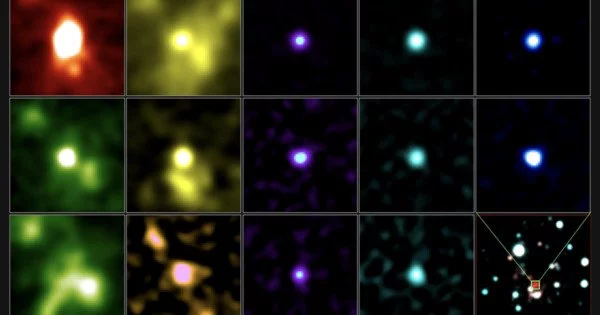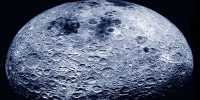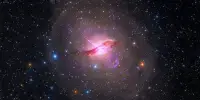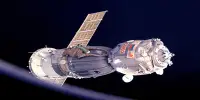Using the Atacama Large Millimeter/submillimeter Array (ALMA) in Chile, researchers from the Netherlands’ Leiden Observatory discovered dimethyl ether in a planet-forming disc for the first time. This is the largest molecule discovered in such a disc to date, with nine atoms. It is also a precursor of larger organic molecules, which can lead to the formation of life.
“We can learn more about the origins of life on Earth from these findings, and thus gain a better understanding of the potential for life in other planetary systems. It will be fascinating to see how these findings fit into the larger picture” Nashanty Brunken, a Master’s student at Leiden Observatory, part of Leiden University, and lead author of the study published today in Astronomy & Astrophysics, says
Dimethyl ether is an organic molecule that is commonly found in star-forming clouds but has never been discovered in a planet-forming disc. The researchers also made a preliminary detection of methyl formate, a complex molecule similar to dimethyl ether that serves as a building block for even larger organic molecules.
“It is really exciting to finally detect these larger molecules in discs. For a while we thought it might not be possible to observe them,” says co-author Alice Booth, also a researcher at Leiden Observatory.
We can learn more about the origins of life on Earth from these findings, and thus gain a better understanding of the potential for life in other planetary systems. It will be fascinating to see how these findings fit into the larger picture.
Nashanty Brunken
The molecules were discovered using ALMA, an observatory co-owned by the European Southern Observatory, in the planet-forming disc around the young star IRS 48 (also known as Oph-IRS 48). (ESO). IRS 48 has been the subject of numerous studies because its disc contains an asymmetric, cashew-nut-shaped “dust trap” 444 light-years away in the constellation Ophiuchus. This region, which most likely formed as a result of a newly formed planet or small companion star located between the star and the dust trap, retains a large number of millimetre-sized dust grains that can collide and grow into kilometre-sized objects such as comets, asteroids, and possibly planets.
Many complex organic molecules, such as dimethyl ether, are thought to arise in star-forming clouds, even before the stars themselves are born. In these cold environments, atoms and simple molecules like carbon monoxide stick to dust grains, forming an ice layer and undergoing chemical reactions, which result in more complex molecules. Researchers recently discovered that the dust trap in the IRS 48 disc is also an ice reservoir, harbouring dust grains covered with this ice rich in complex molecules. It was in this region of the disc that ALMA has now spotted signs of the dimethyl ether molecule: as heating from IRS 48 sublimates the ice into gas, the trapped molecules inherited from the cold clouds are freed and become detectable.
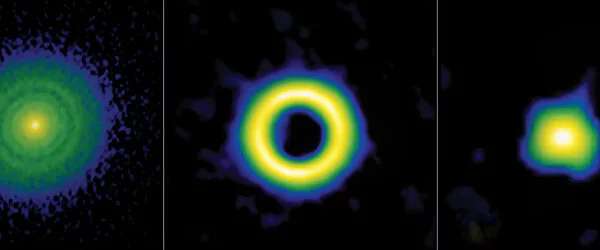
“What makes this even more exciting is that we now know that these larger complex molecules are available to feed planets forming in the disc,” Booth says. “This was previously unknown because in most systems, these molecules are hidden in the ice.”
The discovery of dimethyl ether implies that many other complex molecules found in star-forming regions may also be lurking on icy structures in planet-forming discs. These molecules are the precursors of prebiotic molecules like amino acids and sugars, which are some of life’s fundamental building blocks.
Researchers can gain a better understanding of how prebiotic molecules end up on planets, including our own, by studying their formation and evolution. “We are overjoyed that we can now begin to track these complex molecules from the clouds that form stars to planet-forming discs and comets. More observations, hopefully, will bring us closer to understanding the origins of prebiotic molecules in our own Solar System “says Nienke van der Marel, a researcher at the Leiden Observatory who also took part in the study.
Future studies of IRS 48 with ESO’s Extremely Large Telescope (ELT), which is currently being built in Chile and is scheduled to begin operations later this decade, will allow the team to study the chemistry of the disc’s very inner regions, where planets like Earth may be forming.
